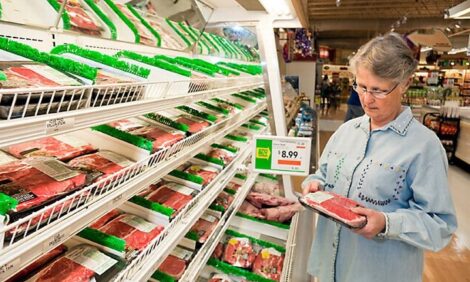



Maintaining welfare standards in the face of a pandemic
Pork producers and swine veterinarians have a longstanding track record for putting pigs first and maintaining high standards for welfare. As an industry, we must not lose sight of this as we navigate through the dynamic situation of reduced harvest capacity.
How long this capacity reduction will last is hard to predict. But under the current guidelines from the Centers for Disease Control, it’s doubtful that processing plants will return to the pre-pandemic throughput any time in the foreseeable future. Over time I’m sure our industry will adapt, but in the short term, decisions need to be made that are counter to our normal practices. We must be conscious of maintaining high welfare standards — not just for the pigs but also the caregivers.
The pork industry has well-established welfare guidelines for air, feed, water and space. Strategies that increase the stocking capacity or reduce growth rate will help achieve the short-term objectives.
Breaking point
Fortunately, there are excellent information sources that provide guidance on interventions that will reduce growth rate allowing harvest capacity to accelerate to the new norm. But as the stocking density or the grow days increase, each of the parameters will be challenged in a different way depending on the initial ratio of pigs to waterers, feeders, square footage and available ventilation. In time, pigs will reach a breaking point and turn to vices to cope. Monitoring pig behavior is more critical than ever.
Disease pressure can, of course, accelerate this process. We have all experienced groups of pigs that have been provided adequate space, lineal feeder availability, water availability and good ventilation that still experience an increase in vices as they fight off bacterial and viral challenges. Watch for increases in disease pressure and expression of endemic pathogens. Be proactive with your interventions and try to determine the root cause.
For example, a finishing barn that provides 2 lineal inches of feeder space per head with four 14-feeder spaces — if stocked to overcapacity while providing 1.5 lineal inches of feeder space per pig — is not likely to experience an increase in vices due to the feeder restriction if all four spaces are available . However, if reduced to less than 1.5 lineal inches, there is likely to be an increase in vices due to competition.
Limiting the number of feeder spaces has more impact on dominant pigs than lighter weight pigs. Similarly, a reduction in feeder space and a reduction in pan coverage from 40% to 30% is not likely to trigger an increase in vices without some other external driver such as hot weather.
Diseased pigs less tolerant
On the other hand, a group of pigs that is challenged with porcine reproductive and respiratory syndrome (PRRS) with similar restrictions due to overstocking is likely to result in a higher mortality and higher number of individual pigs requiring removal and euthanasia. In these situations, we usually expect to see increases in ulcers in pale pigs with black tarry feces or acute death with large blood clot in the stomach. Other manifestations of stress are ear, side, flank and tail biting.
The solution is to remove and treat or euthanize these individuals. When these conditions occur in the population, review the restrictions that have been put in place and make rational adjustments. In some situations, when these restrictions are implemented due to decreased harvest capacity, the barn population will need to be euthanized to maintain welfare. Strategies such as double or triple filling will reach this threshold in 8 to 10 weeks and 5 to 6 weeks respectively, depending on the feed and water availability. If additional space is not available, remove the population.
Support your crew
The conflict between what we’d normally do and the difficult and emotionally painful decisions we’re faced with today is obviously not good for staff morale. Management should therefore be ready and, more important, invest the time to provide motivation and support. This includes walking the barns more frequently, talking with caregivers, explaining your decisions and assuring them that you’ve explored all options. Increasing the barn walkthroughs should be done to observe pigs more frequently. As management, you also need to be prepared to step in to oversee or do those tasks yourself.
Keep in mind that non-ambulatory pigs may become more prevalent when crowding persists. Those animals should be removed and euthanized in a timely and humane manner.
Most important, don’t let up. Continue to conduct and document daily observations. Communicate proactively to caregivers about your thresholds and when these decisions need to be made. Tightening your timeline of decisions for removal is also logical and prudent.









